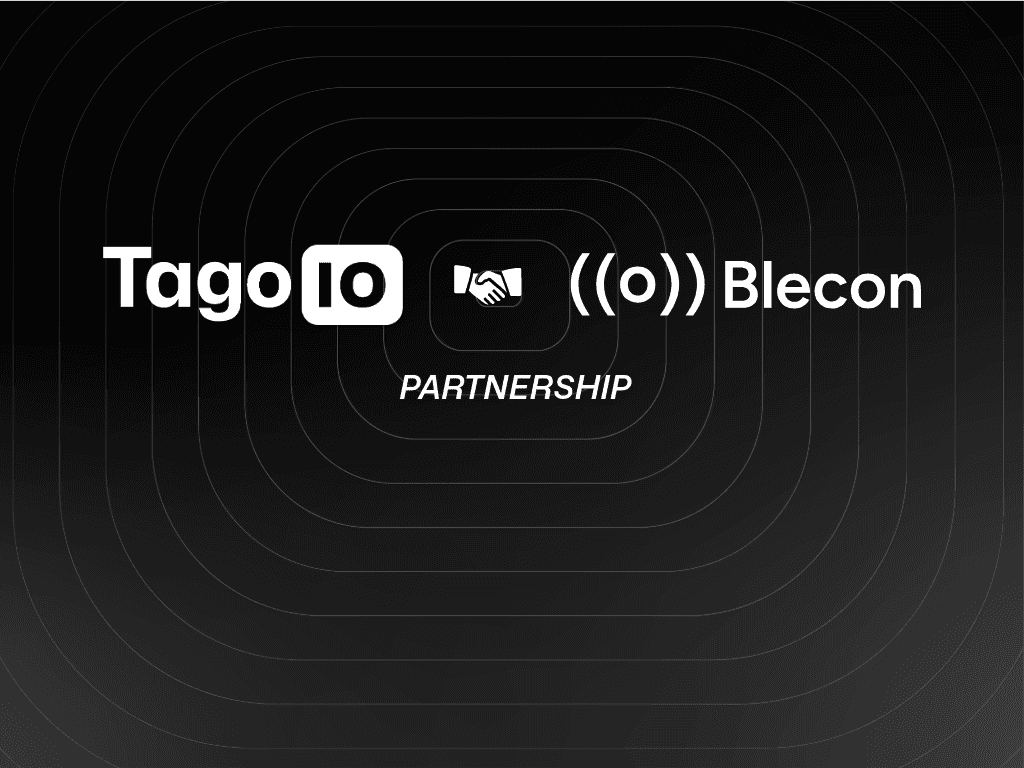Blog
Tech Insigths
MQTT in Cellular IoT: Deep Dive into Protocol Variants, Advantages, and Real-World Use
Discover why MQTT is the optimal protocol for cellular IoT applications using NB-IoT, Cat-M1, and LTE Cat-1. Compare protocol variants, learn practical implementation strategies, and explore TagoIO's comprehensive MQTT integration features for reliable IoT connectivity.

TagoIO Team
Apr 23, 2025



The Internet of Things (IoT) has redefined connectivity, especially in environments where constrained devices communicate over unreliable or low-bandwidth networks. One protocol stands out as the go-to choice for this new frontier: MQTT (Message Queuing Telemetry Transport).
In cellular IoT applications, especially those leveraging LPWAN technologies like NB-IoT and LTE Cat-M1, using a lightweight communication protocol is critical to ensure efficient use of bandwidth, reduced power consumption, and reliable performance over constrained networks. These devices often operate on limited data plans, sleep for extended periods to conserve battery, and connect over variable-quality links — all of which demand a protocol that minimizes overhead while maintaining message integrity and delivery assurance. Lightweight protocols like MQTT and MQTT-SN are designed to reduce packet sizes, support low-power operations, and ensure robust communication even in the face of high latency or intermittent connectivity, making them essential for scaling cellular IoT solutions both economically and technically.
Whether you're deploying sensors in a field, connecting industrial machinery, or building smart city infrastructure, MQTT is likely part of the story. This post delves into the depths of MQTT, its transport variants, and a comparison with competing protocols like CoAP, as well as its suitability for cellular IoT technologies such as NB-IoT, Cat-M1, and LTE Cat-1.
What Is MQTT, Really?
MQTT is a lightweight, open OASIS standard messaging protocol designed for constrained devices and low-bandwidth, high-latency, or unreliable networks. It is based on the publish/subscribe model, decoupling message producers (publishers) from consumers (subscribers) through a central broker.
Pub/Sub Model Breakdown:
Publisher: Sends messages on a specific topic.
Subscriber: Receives messages by subscribing to that topic.
Broker: Manages all message routing, client sessions, and QoS levels.
MQTT Variants and Transport Types
1. MQTT over TCP/IP (Standard MQTT 3.1.1 / MQTT 5.0)
MQTT over TCP/IP is a lightweight, publish-subscribe messaging protocol that uses the reliable, connection-oriented TCP transport layer to ensure ordered and guaranteed delivery of data between IoT devices and servers.
Transport Layer: TCP
Encryption: TLS (Transport Layer Security)
Protocol Overhead: Moderate
Typical Payload Size: 2 bytes minimum
Advantages:
Guaranteed message delivery (QoS 1 and 2)
Maintains session state
Built-in keep-alive and Last Will messages
Optional message properties (in MQTT 5.0)
Use Cases:
System based on cellular and satellite communication
Remote asset tracking
2. MQTT-SN (Sensor Networks)
MQTT-SN is ideal for small microcontrollers and low-bandwidth environments because it was specifically designed with minimal overhead and resource constraints in mind. Unlike standard MQTT, MQTT-SN uses a binary header format and supports topic ID registration, which eliminates the need to transmit long topic strings repeatedly — reducing packet sizes dramatically. It operates over UDP, making it suitable for networks where TCP is too heavy or unavailable, and its ability to function with sleeping or intermittent clients makes it a perfect match for battery-powered devices. These features collectively enable ultra-low-power microcontrollers with limited RAM, CPU, and connectivity (like those used in Zigbee, BLE, or LoRa) to communicate efficiently in IoT deployments.
Transport Layer: UDP (but also adaptable to Zigbee, BLE, etc.)
Key Feature: Topic aliases replace full strings for space efficiency
Key characteristics of MQTT-SN:
Minimal header size (~2 bytes)
Optimized for ultra-low power devices
Supports sleeping clients with gateways
Use Cases:
Wireless sensor networks
Smart lighting over Zigbee
MQTT-SN requires a gateway to translate between MQTT-SN and a full MQTT broker.
3. MQTT over WebSockets
MQTT over WebSockets is a version of the MQTT protocol that transmits messages using the WebSocket protocol, enabling real-time, bidirectional communication between IoT devices and web applications through firewalls and browsers.
Transport: WebSocket over TCP (often port 443)
Use Case: Enables MQTT communication from browsers or Web-based dashboards
Real-World Use:
IoT dashboards and mobile apps
Developer debugging environments
MQTT vs CoAP vs Raw UDP
Feature | MQTT (TCP) | MQTT-SN (UDP) | CoAP (UDP) | Raw UDP |
|---|---|---|---|---|
Transport | TCP | UDP | UDP | UDP |
Reliability | Yes (TCP + QoS) | Medium (QoS, app ACK) | Medium (confirmable msgs) | No |
Security | TLS | DTLS (via gateway) | DTLS | None (manual) |
Asynchronous | Yes | Yes | Yes | No |
Sleep-Friendly | Yes | Yes | No (stateful) | Yes |
Payload Overhead | Low (~2 bytes) | Very low | Low (~4 bytes) | None |
Use Case: Using Cat-M1 and MQTT in Asset Tracking
Let’s say you’re deploying a fleet tracker:
Uses Cat-M1 (to work even on the move)
Sends GPS and battery every 60 seconds via MQTT
Publishes data to the TagoIO platform
Visualized in dashboards; triggers alerts if speed > 120 km/h
Because MQTT allows persistent sessions and TCP reliability, the tracker keeps connection even when hopping between towers — no re-handshake, no lost packets.
Why MQTT is Ideal for NB-IoT, Cat-M1 and Cat-1
NB-IoT, Cat-M1, and Cat-1 are cellular LPWAN technologies designed for low-power, wide-area connectivity — but they differ in bandwidth, latency, and data throughput:
Technology | Bandwidth | Latency | Use Case |
|---|---|---|---|
NB-IoT | < 100 Kbps | High | Smart meters, static remote sensors |
Cat-M1 | ~375 Kbps | Low | Mobile remote sensors |
LTE Cat-1 | Up to 10 Mbps | Low-Medium | Telematics, POS terminals |
Why MQTT wins in cellular IoT:
1. Reliable Message Delivery
MQTT ensures message delivery using TCP and QoS levels. QoS (Quality of Service) in MQTT defines the level of guarantee for message delivery between sender and receiver, ranging from at most once (QoS 0), at least once (QoS 1), to exactly once for critical systems (QoS 2), depending on the reliability required by the application.
2. Power-Efficient Sleep Support
MQTT supports persistent sessions and keep-alive timers, letting devices sleep for extended periods — essential for battery-powered NB-IoT devices.
3. Firewall/NAT Traversal
MQTT uses long-lived TCP connections, which are easier to traverse in NAT-ed cellular networks than stateless UDP messages.
4. Built-In Security
TLS/SSL integration makes MQTT suitable for transmitting sensitive data securely — often required in regulated sectors like healthcare or energy.
Industry Adoption: Who’s Using MQTT for IoT?
We investigated some companies that design and manufacture cellular modules for IoT from the protocol perspective, below a summary of our findings:
1. Quectel Wireless Solutions
Modules: BG95, EC25, BG600L
Support MQTT with TLS and persistent sessions
Integrated SDKs for AWS IoT Core, Azure IoT Hub, also easily connected with TagoIO
2. u-blox
Modules: SARA-R4, LARA-R6
Offer MQTT-SN for ultra-low power applications
Feature firmware with built-in MQTT clients
3. Telit Cinterion (Thales)
Modules: ME910G1, LE910C1
Provide MQTT and MQTT-SN clients
Focus on telematics, smart metering
4. Sierra Wireless
Modules: HL7800, WP7702
Pre-certified MQTT client support
These modules are used in asset tracking, industrial control
5. Nordic Semiconductor
SoC: nRF9160 SiP
Offers both MQTT and CoAP for flexibility
Integrated with Zephyr RTOS and nRF Connect SDK
Final Thoughts
Whether you’re dealing with power-starved remote sensors or latency-sensitive industrial systems, MQTT is a versatile and production-ready protocol. For cellular-based IoT — especially on NB-IoT or Cat-1 — it provides the right mix of reliability, session management, and power efficiency.
If your device has to sleep and wake while keeping data flowing reliably over lossy networks, MQTT is almost always the best protocol to build on.
TagoIO's Seamless MQTT Integration
TagoIO offers a comprehensive MQTT implementation that streamlines IoT device connectivity across all cellular technologies. With a dedicated MQTT broker available for Starter and Scale accounts in the US region (via mqtt.tago.io), the platform eliminates the complexity of managing your own messaging infrastructure. The service utilizes secure, token-based authentication for simplified device management, supporting both standard (port 1883) and SSL-encrypted (port 8883) connections.
What sets TagoIO's approach apart is its integration with the broader platform ecosystem—when devices publish MQTT messages, the platform's Live Inspector provides immediate visibility into incoming data, while configurable Actions can automatically process, transform, and store this information in device buckets. For those requiring third-party brokers, the MQTT Relay feature bridges external MQTT services with TagoIO's powerful data processing capabilities. Learn more about the TagoIO integration with MQTT and MQTT Relay.

TagoIO Team


